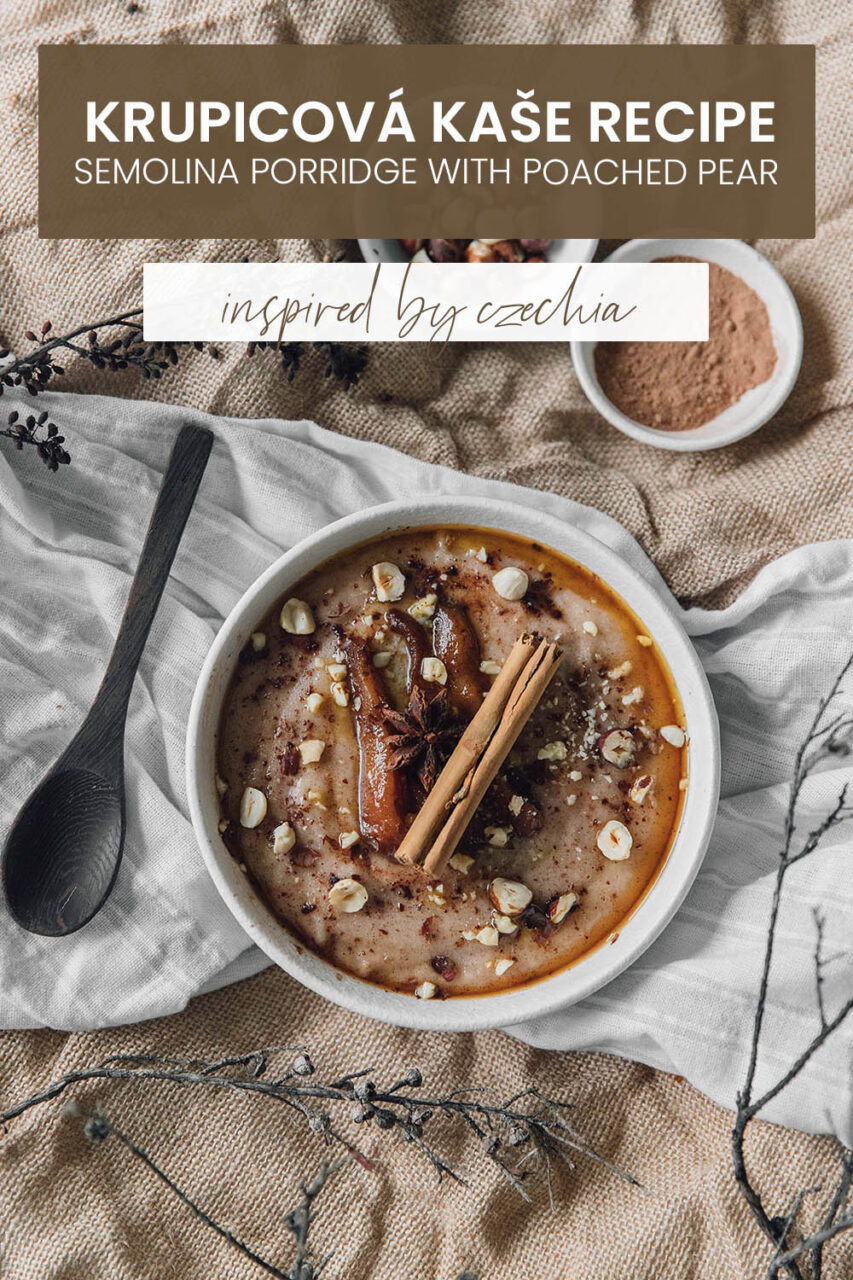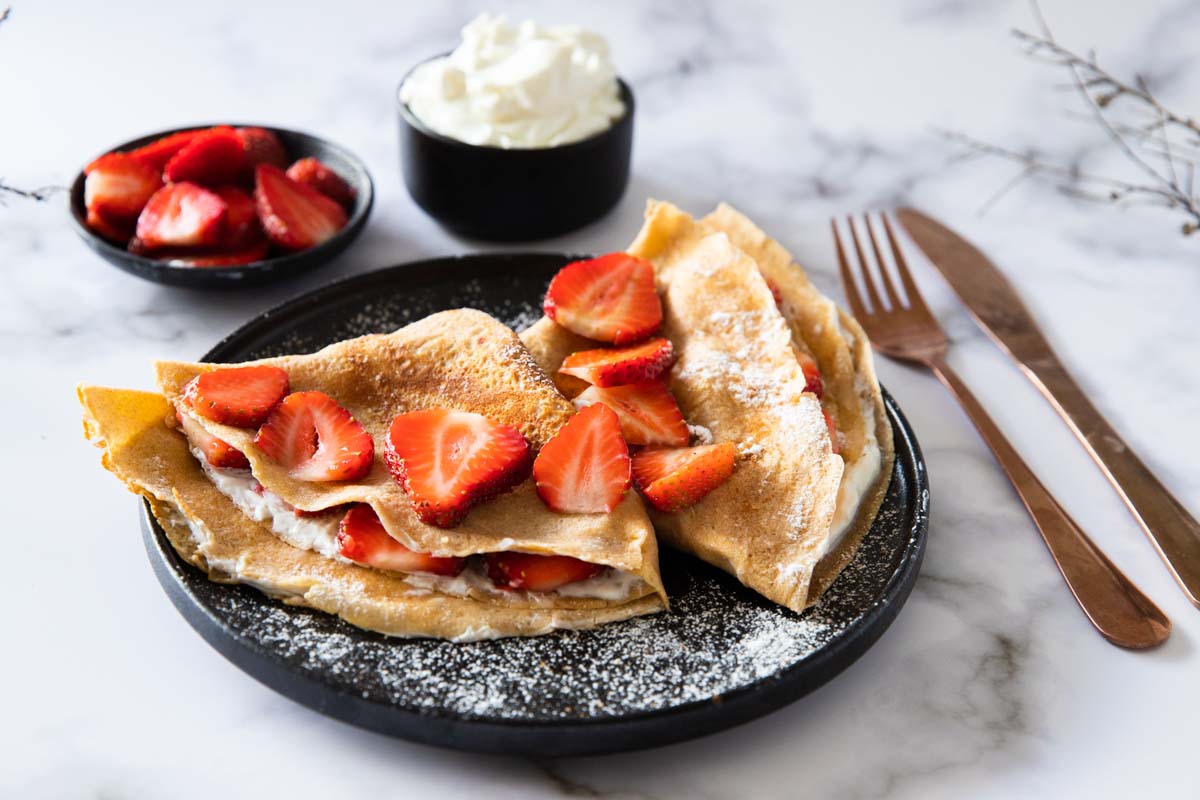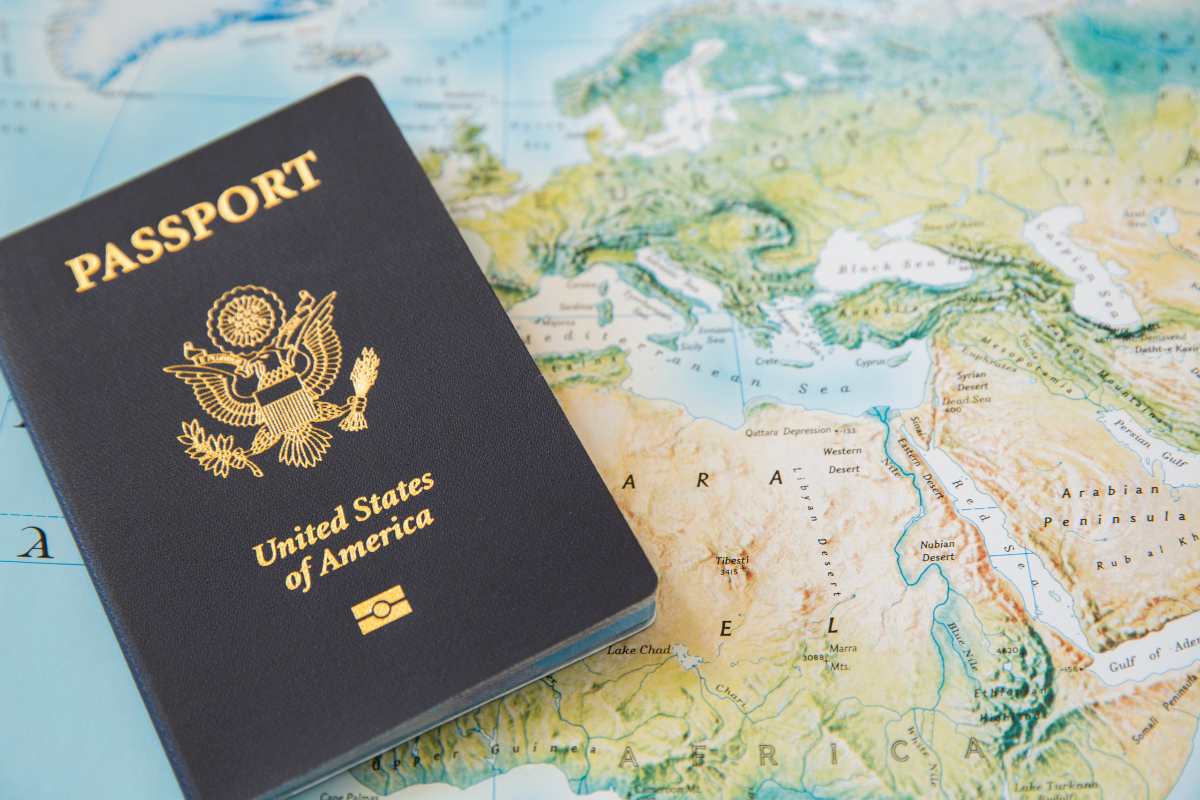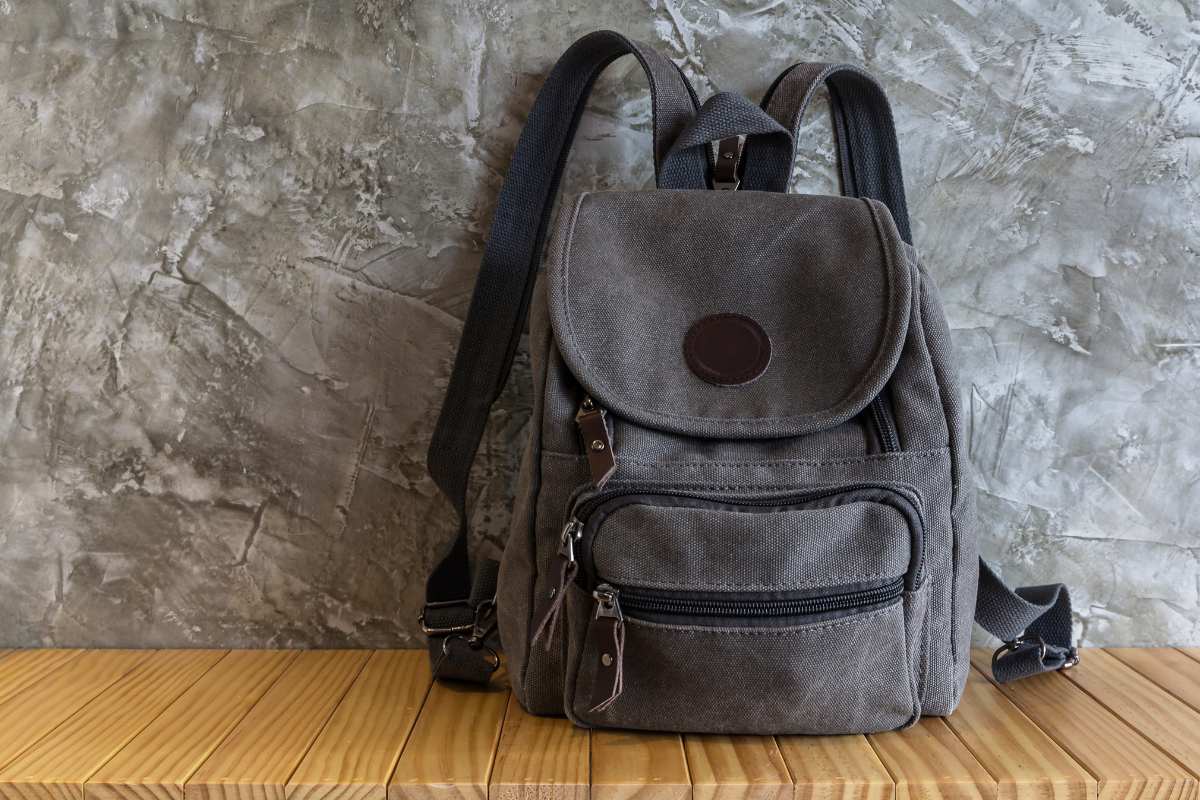This creamy semolina porridge, Krupicová Kaše, is a staple comfort food in Czechia. Topped with poached pears, hazelnuts & maple syrup, it makes for a delicious breakfast or snack!

The Czech Republic (or Czechia as it is commonly called), is one of the few European countries that both Floss and I have visited at separate times and have come back with mixed feelings about. I have been to Prague twice for a handful of days each time, so my experience of the country is limited to that of the capital city.
There were many things I did love about Prague. The gothic architecture around the city was divine, the old town square felt straight out of a fairytale and nightlife was fantastic. However, there was a certain sombreness in the atmosphere that I couldn’t quite shake, and it stopped me from falling in love with the place as much as I thought I would.
Floss, on the other hand, fell in love with the city. Prague was hands-down one of her favourite cities that she has visited. She loved the majestic albeit menacing medieval castles and the ornate, gilded twirls of baroque architecture, and was entranced by the slightly menacing, grungy atmosphere.
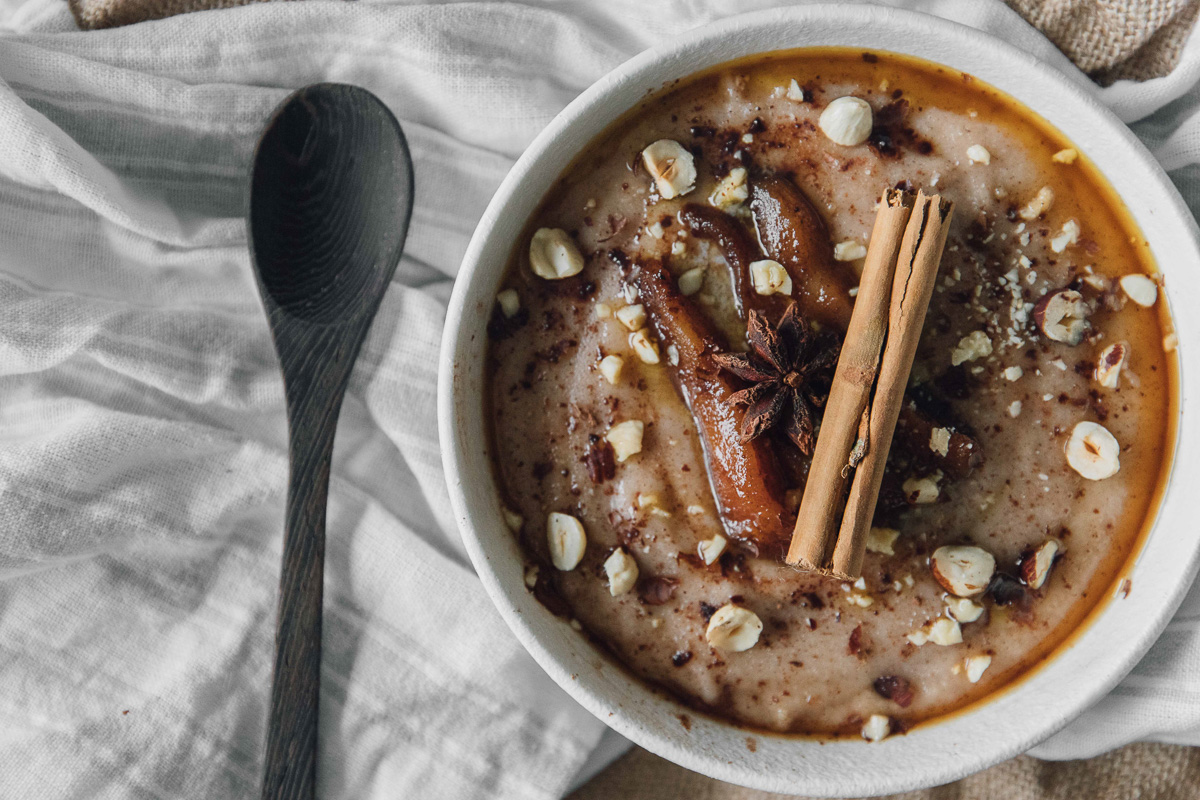
A Brief History of the Czech Republic
Speaking of history, there is a lot more to Czechia than just its capital city, so let’s zoom out and dive into the country’s history. The region presently known as Czech Republic was initially populated by the Celts in 4th Century BC. It was from the Celtic tribe of Boii’s Latin name, Boiohaemum, that the region’s name (Bohemia) derived.
In 950 the Czech state became part of the Holy Roman Empire, and the 14th century ushered in the so-called ‘golden age’ of Bohemia, with its culture and wealth flourishing under the rule of Charles IV, by and for whom several key sites in Prague, such as the city’s oldest university, and the famous Charles bridge, were established and named.
The Holy Roman Empire continued to rule in Bohemia until the 19th century, when the Austrian Habsburg Empire took control of the region. The 19th and early 20th centuries saw a flourishing in great thinkers, musicians, writers, and artists, with figures such as the geneticist Gregor Mendel, the composers Dvořák and Smetana, the profound albeit creepy Freud, the art nouveau artist Mucha, and the author Kafka.
After the Austro-Hungarian empire was defeated in World War One, the independent state of Czechoslovakia was founded in 1918. However, the country’s independence was short-lived: at the Munich conference in 1939, various European powers agreed to allow Germany to annex certain parts of the country, in an attempt to assuage Hitler.
After World War Two, the country was subsumed into the Eastern Bloc of the Soviet Union. During communist rule, thousands of Czechoslovaks were subject to political persecution, torture, and death. This lasted until the Velvet Revolution of 1989, the same year in which the Iron Curtain fell.
However, the people of Czechoslovakia did not remain silent during this period of oppressive rule. The Prague Spring, which involved mass protesting and political liberalisation, occurred for the first half of 1968. The then president Alexander Dubček attempted to grant liberties to Czechoslovaks in a move to democratise and decentralise the country.
However, this attempted liberalisation was violently quelled by other members of the Soviet Union and the Warsaw Pact, who invaded the country and put an end to these reforms in August 1968. Finally, on 17 November1989, on the 50th anniversary of a violently-supressed protest against the Nazi storming of Prague University in 1939, a student demonstration ushered in the non-violent Velvet Revolution. This revolution involved large-scale demonstrations and protests led by students and political dissidents; it brought to an end the 41-year tyranny of the Soviet Union in Czechoslovakia, and introduced a parliamentary republic.
History of Czech Cuisine
Czech cuisine has both influenced and been influenced by its surrounding countries. Various dishes from German, Austria and Hungary were brought to region during the Hapsburg dynasty, many of which are still staples in Czech cuisine. The cuisine is characterised by being heavy and very filling. Meals normally consist of multiple courses, with thick soups and stews more often than not on the menu.
Traditionally, meat was only consumed around once a week in Czech households. Back then, meat was expensive and was not readily available. These days, there is an abundance of farmable meat, which has transformed Czech cuisine to become very meat-centric. During the long winters, a very limited amount of fresh produce is available. The limited access to vegetables means that meals tend to largely consist of starches and meat.
Traditional Czech Dishes
- Česnečka– A soup where garlic stars as the main ingredient. The soup also includes croutons and poached egg.
- Knedliky– These bread dumplings are boiled and sliced and tend to be used for soaking up sauces.
- Zeleninová polévka- A vegetable soup that incorporates various root or leafy vegetables including carrots, celery, and potatoes.
- Kyselo- Another hearty Czech soup that has a base of sourdough made with fermented rye flour. This is poured in a caraway-spiced broth, and often includes potatoes, mushrooms and egg served on top.
- Rýžový nákyp– A traditionally Czech rice pudding made that is often served as a main course, even though it is a sweet dish!
- Smažený sýr- The dish consists of a block of cheese which is coated in eggs, breadcrumbs, and flour, then fried until crispy.
- Bramboráky– Savoury potato pancakes made of grated potatoes mixed with eggs, garlic, and spices such as marjoram and pepper, which is pan-fried until crispy.
- Krupicová Kaše- A porridge made of semolina and milk, which is traditionally topped with butter, cacao, cinnamon and sugar.
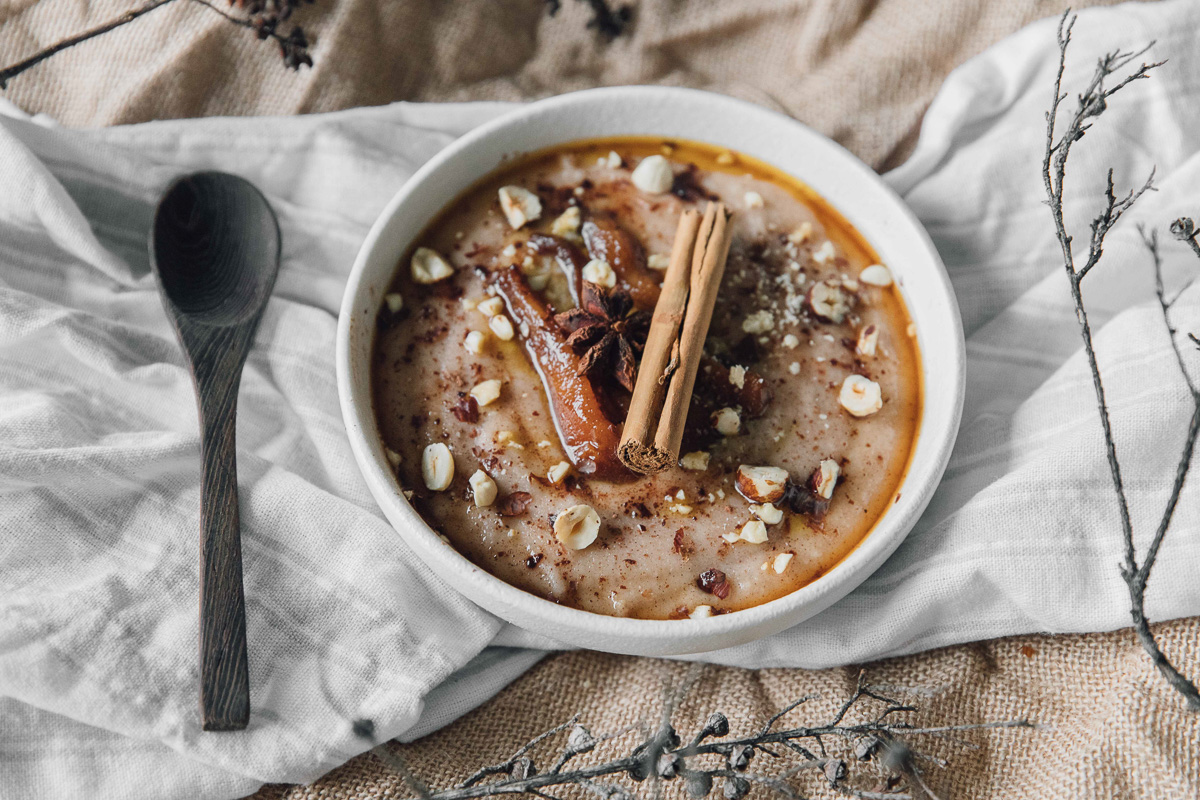
Making Krupicová Kaše (Semolina Porridge)
This around-the-world cooking challenge has really highlighted the popularity of porridge around the world. I’ve already come across so many variations of this humble dish. In the past, the only porridge I ever made was from rolled oats.
Now, I’ve cooked coconut porridge from Angola, peanut butter rice porridge from the Central African Republic, and now, semolina porridge from Czechia. There are so many fun ways to make staple dish, and it’s definitely broadening my porridge horizons.
Semolina porridge (or pudding) has quite a history. It has supposedly been eaten in Europe since Roman times, as was discovered in a recipe book dating back to the 4th century AD. In Czechia, it is called Krupicová Kaše, is consumed as a snack, an entrée, a dessert, or as we had it, as a breakfast.
The dish makes a base for whatever toppings ones heart desires. Typically, the toppings used in Czechia include butter, cacao, sugar and cinnamon. For this recipe, we decided to stay fairly true to these traditional toppings. However, we couldn’t resist a few additions to our semolina porridge- namely, poached pears and toasted hazelnuts.
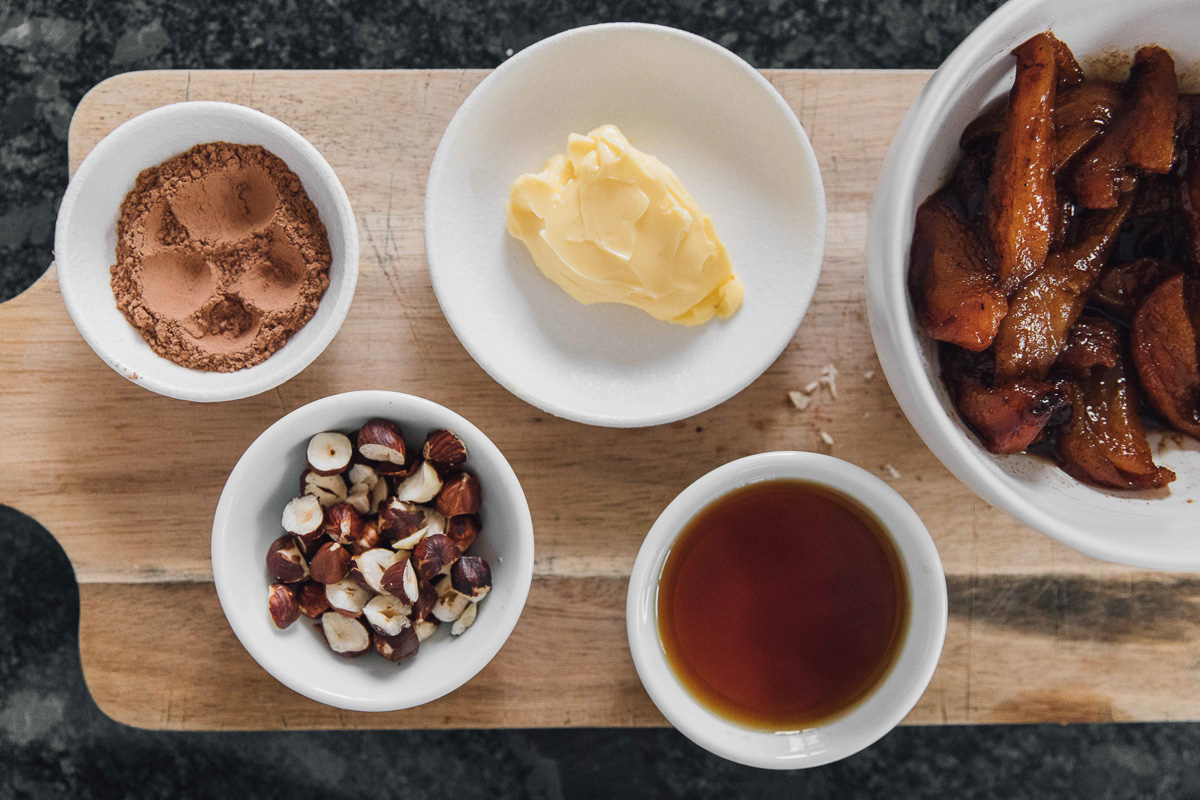

How to make Semolina Porridge with Poached Pear (Krupicová Kaše)
This semolina porridge is one of the easiest things to make: it literally comes together in 10 minutes, in just one pot! The addition of poached pears makes the process a little longer, however you can always prepare these the night before if you are wanting a quick breakfast option (or skip it in altogether and just use the other toppings).
- If making the poached pear, put pear slices in a small saucepan with brown sugar and cinnamon stick and cover with water. Bring to boil, then cover and reduce to a simmer, cooking for 30 minutes or until pear goes soft.
- In a medium saucepan, pour in milk. Add semolina flour, salt, cinnamon, allspice and nutmeg and whisk to combine.
- Over medium-low heat, cook the porridge until thick, stirring constantly to keep lump-free. This will take around 10 minutes.
- Remove from heat, divide into two bowls and top with butter, toasted hazelnuts, maple syrup, poached pears and a dusting of cacao. Eat while its hot!
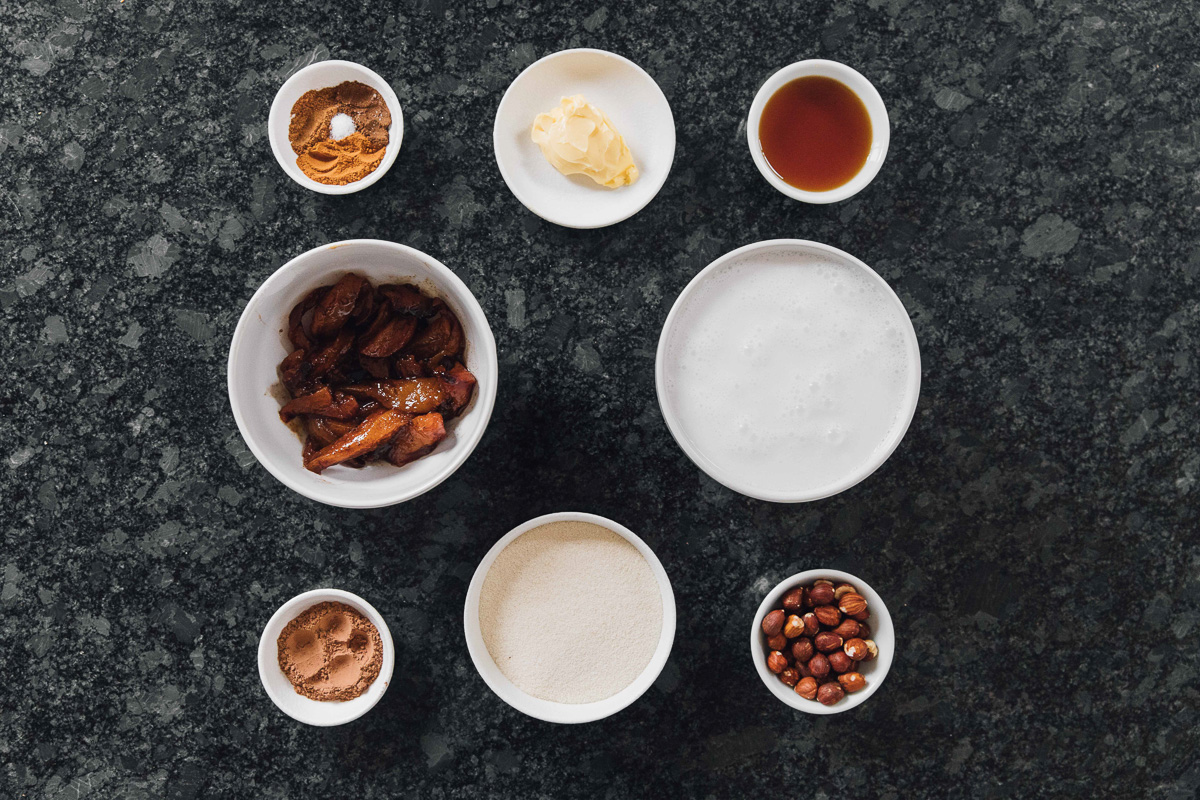
Ingredient notes for Semolina Porridge with Poached Pear
- Semolina flour- Semolina is a coarse flour made from durum wheat that contains a lot more fiber and protein than regular all-purpose flour. You should be able to get it from the supermarket, but if not, try a refillery or a specialty store.
- Milk– Traditionally, cow’s milk is used to make semolina porridge, however you can sub for any non-dairy milk (we used soy).
- Maple Syrup- We sweetened our semolina porridge by pouring maple syrup on top, however you can use any sweetener you like (typically, granulated sugar is used).
- Butter- Simply omit the butter topping if you’re vegan or sub for a similar dairy-free spread.
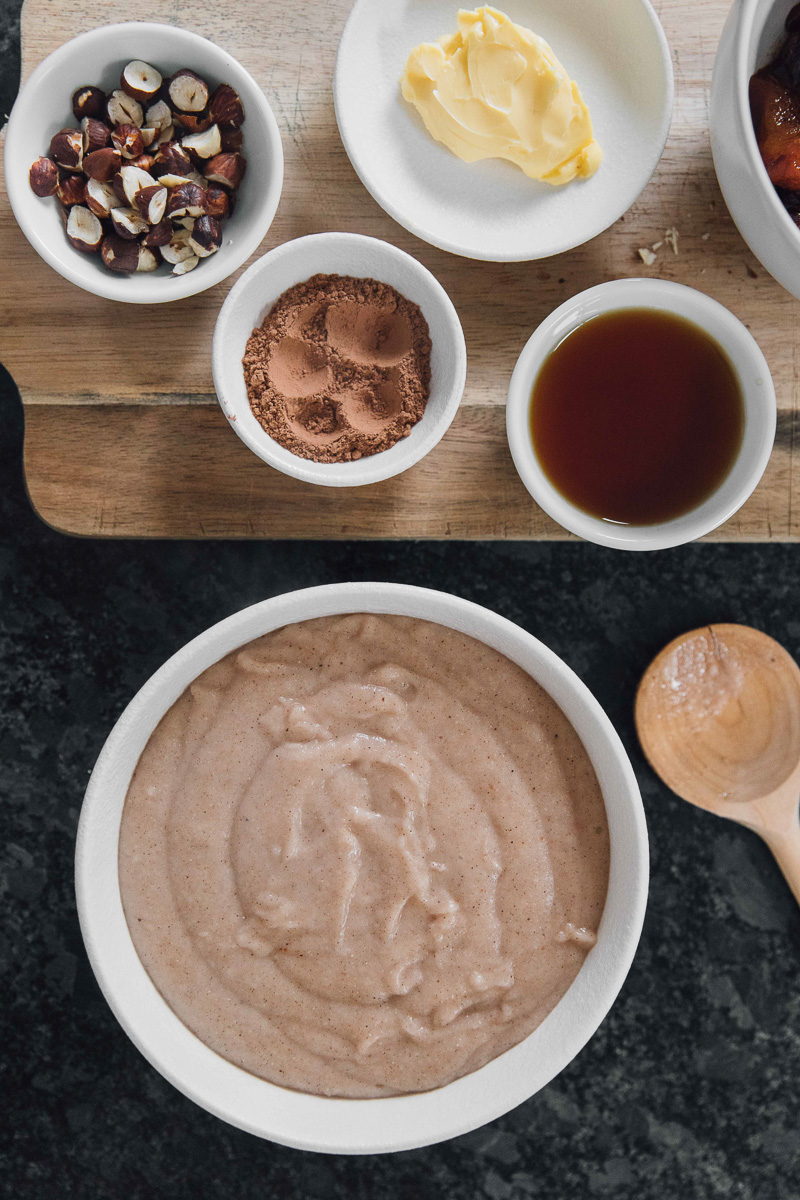
Serving suggestions for Krupicová Kaše
This semolina porridge works as an easy breakfast, snack or dessert. You can either go with our topping suggestions of poached pear, toasted hazelnuts, butter, maple syrup and cacao, or get inventive with your own combination. Fresh, dried or poached fruit, nut butter, honey and jam would all work nicely on top.

Krupicová Kaše Recipe: Semolina Porridge from Czechia
This creamy semolina porridge, or Krupicová Kaše, is a staple comfort food in Czechia. It is a blank canvas for your favourite toppings. We went with a combination of poached pears, toasted hazelnuts, butter, maple syrup, cinnamon and cacao.
Ingredients
Poached pear:
- 1 pear, peeled and sliced longways
- 2 tbsp brown sugar
- 1 cinnamon stick
Semolina porridge:
- 2 1/2 cups milk, dairy or non-dairy
- 1/2 cup semolina flour
- Pinch salt
- 1 tsp cinnamon
- 1/4 tsp allspice
- 1/4 tsp nutmeg
To Top:
- 2 tsp butter, omit if vegan
- Hazelnuts, toasted and halved
- Maple syrup, to taste
- Cacao, to dust
Instructions
For the poached pear:
- Put pear slices in a small saucepan. Add brown sugar and cinnamon stick and cover with water. Bring to boil, then cover and reduce to a simmer, cooking for 30 minutes or until pear goes soft.
For the semolina porridge:
- In a medium saucepan, pour in milk. Add semolina flour, salt, cinnamon, allspice and nutmeg and whisk to combine.
- Over medium-low heat, cook the porridge until thick, stirring constantly to keep lump-free. This will take around 10 minutes.
- Remove from heat, divide into two bowls and top with butter, toasted hazelnuts, maple syrup, poached pears and a dusting of cacao. Eat while its hot!
Notes
Recipe inspired by Very Good Cook
Other dishes to try:
- Caramelised Banana Porridge from Benin
- Cocada Amarela Recipe: Spiced Coconut Porridge from Angola
- Layered Mahalabia Chia Pudding – A Bahrain Dessert
Like this Krupicová Kaše recipe? Pin it for later!
